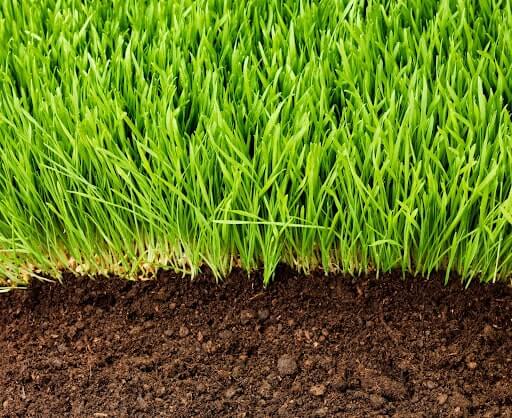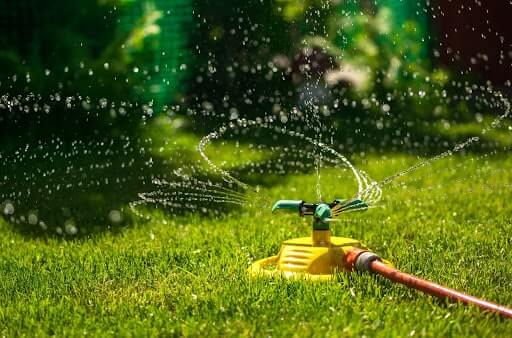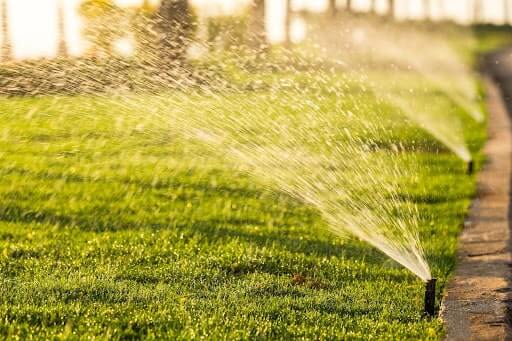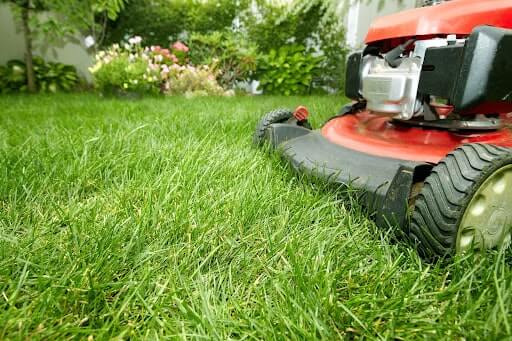How to Keep Your Lawn Healthy in the Heat: 7 Simple Steps to Getting Greener Grass

Everyone enjoys having a healthy, green lawn outside their home. However, as seasons change, it can be hard to keep your grass looking vibrant and thick. Believe it or not, learning how to keep your lawn green in the summer is much easier than you think.
In this blog, we’ll review what causes your grass to lose color and share how to keep your lawn healthy in the heat in just a few simple steps that you can start following today.
What Causes Your Lawn to Lose Color?
Before you learn how to keep your lawn healthy in the heat, you need to understand why it may be deteriorating. Oftentimes it comes down to three main reasons. Below, we’ve provided the most common reasons your lawn isn’t turning as green as you want it to be.
Improper Watering
Watering your lawn too lightly or too heavily can prevent the roots from being fully saturated. In addition, the time of day you choose to water your grass can affect its growth. That’s why it’s important to find a balance when forming your watering habits, which we’ll cover later on in the blog.
Improper Mowing
Mowing your grass too short or waiting too long between mowings can be detrimental to the growth of your lawn. Later in the blog, we’ll discuss how the length of your grass affects the way it grows and absorbs water.
Disease & Pests
When the weather gets warmer so does the risk of disease and pests hurting your lawn. Many times, these problems are connected to your watering habits and can be easily avoided once you know how to properly hydrate your grass.

How to Keep Your Lawn Green: 7 Simple Steps
Once you know what causes your lawn to deteriorate in the summer, it’s time to learn how to prevent it from happening. Below, we’ve outlined seven steps that should help you keep your lawn green this year.
1. Soak the Grass
During dry spells, your grass will become dormant because it’s trying to conserve as much energy as possible. When the grass is dormant it will turn brown or tan. Regular watering can prevent your grass from dormancy and train it to develop deep roots.
A best practice to follow when learning how to keep your grass green is a watering process that mimics the rainfall. This means soaking your grass at infrequent intervals. Watering deeply, but infrequently, helps saturate the root system. You can soak your grass about 3-4 times a week, applying about 1 inch of water per week.
2. Pay Attention to Where Your Water is Going
Many homeowners waste time and money because they end up watering pavements or pathways causing runoff. This can be avoided by keeping an eye on where your water is gathering or flowing.
When you notice runoff or puddles are beginning to form, try moving your sprinkler to another location. If you see large puddles of water, turn your watering system off for 15-20 minutes so you can give the water a chance to be fully absorbed.
3. Avoid Watering in the Rain
As you learn how to keep your lawn healthy in the heat, it’s important to remain flexible with your watering schedule. To avoid overwatering your grass, be proactive and turn off your sprinklers if rain is in the forecast. If there is heavy rain, be prepared to skip a day or two in your watering schedule so the sun can absorb any excess water.
4. Stay Away From Hot Water
The temperature of your water plays a key role when learning how to keep grass alive in summer. If your garden hose is left out sitting in the sun, the water inside is heating up and not moving.
Using this water to hydrate your grass could result in damage since it ends up burning your lawn. Remember to empty your hose of any water after each use to avoid doing damage to your grass.

5. Aerate Your Lawn
You can aerate your lawn by using a garden fork. Push the fork into the ground at 1-foot intervals. Aerating your lawn is important as you learn how to keep your lawn healthy in the heat because it gives the soil a chance to breathe. It’s also beneficial if you find that runoff is a regular occurrence. The holes help the grass absorb the water easier and quicker.
6. Stop Weeds From Spreading
It may seem obvious, but weeds can play a large role when learning how to keep your grass green since they prevent the growth of your lawn. The best way to deal with weeds is to take care of them as soon as they appear. This means you should manually remove weeds with your hands or other gardening tools.
Removing weeds yourself is more effective than applying weed repellent to your lawn all at once. However, if you notice there’s a large area where weeds are spreading it’s okay to apply a repellent to that area alone.
7. Watch Out For Wear & Tear
Oftentimes, your lawn will experience a lot of foot traffic during the warmer months. This can be from friends, family, and even animals. Unfortunately, excess traffic can cause the structure of your grass to become damaged.
One of the best ways to avoid this is by overseeding your lawn at the beginning of fall. Doing this will help thicken your lawn for the upcoming spring season, as well as aid in repairing any damage caused during the summer.

FAQs
After learning how to keep your lawn healthy in the heat, people can still be left with some common questions. Below, we offer answers to the most popular questions homeowners have about their grass in the warmer months.
When Should You Water Grass in Hot Weather?
Time matters and the best time to water your grass when it’s hot out is between 6 AM and 10 AM. Doing this allows you to reduce evaporation. Watering when the sun is out allows your grass to go through the photosynthesis process.
When your grass isn’t able to go through this process, for example, because you’re watering at night, the water doesn’t have the time to properly absorb, resulting in increased dampness which can lead to the risk of disease.
Is it OK to Fertilize in Hot Weather?
The simple answer is yes. Water is important to keep your grass healthy, but so is food. A slow-release fertilizer works well to give your grass a proper source of nutrients. Most fertilizers take about 6-8 weeks for the microbes in your soil to process the nutrients.
Replenishing your fertilizer regularly is the best way to ensure you have thick and healthy grass. To do this, apply your fertilizer at regular intervals. The best time to apply is after rainfall. Always avoid using fertilizer if your grass is dormant.
Is it Bad to Mow Your Lawn When it’s Hot?
It’s better to mow your lawn more frequently in the heat. A best practice to follow is to avoid cutting your grass shorter than 3-3 ½ inches. Mowing more frequently can make it easier to keep a consistent length.
This is important because it allows the roots of your grass to establish a longer and healthier system. When the roots are longer, they are less likely to dry out in the heat, plus having longer grass blades ensures your roots are protected from the sun.

Learning how to keep your lawn healthy in the heat takes time and effort, but in the end, it’s always worth it when you get to show off a bright green and thick lawn all summer long.
Start getting your lawn ready for the heat today. Check out our lawn care products to ensure your grass stays healthy and green no matter how hot it is outside.
